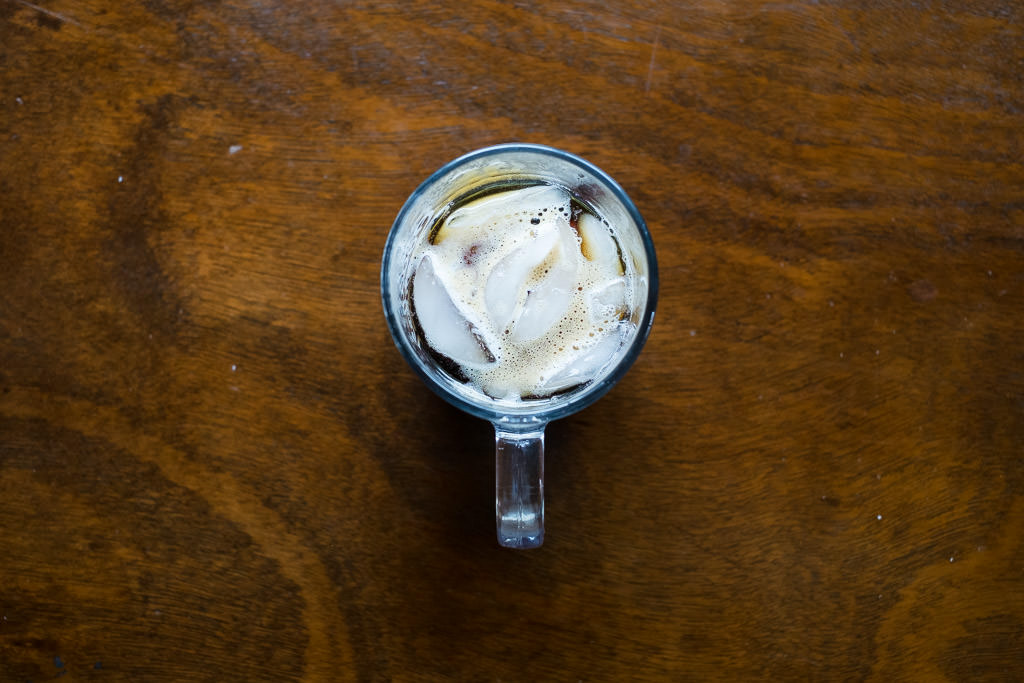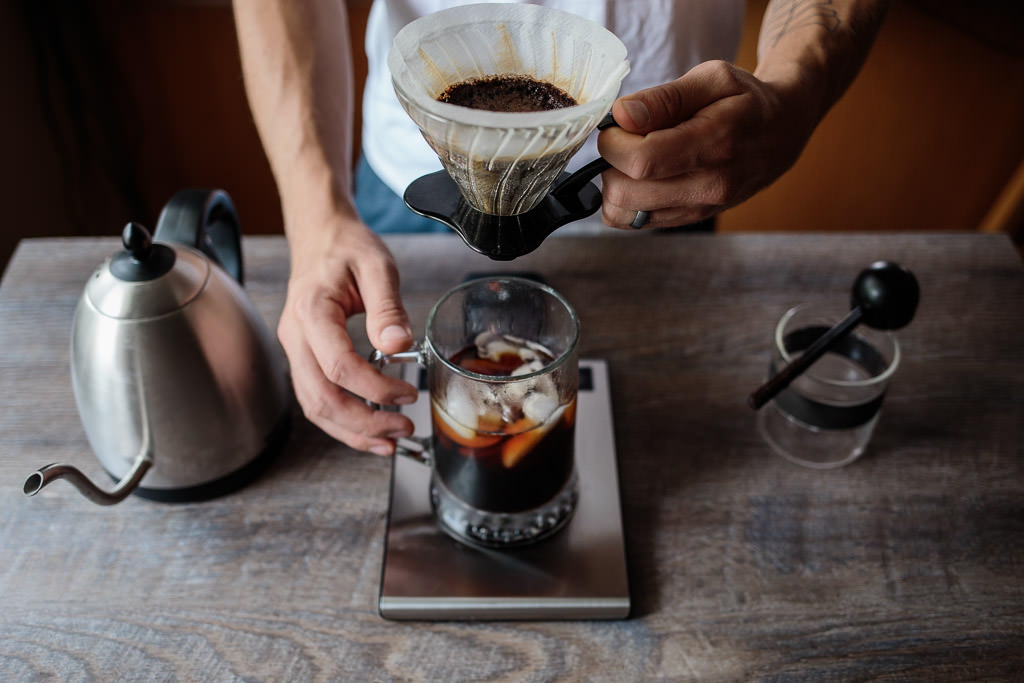Japanese Iced Coffee: Aeropress and Pour Over
If you follow any of my social media accounts, you likely are aware of the fact that I hate it when it's hot. At the time of this writing, we have an excessive heat warning in Southern Utah for temps over 110F. I'm not a fan. So I've been reminiscing over winter weddings and brewing my fill of cool coffee beverages. We've discussed the slow steeped cold brew, but what if you need your coffee now? Or perhaps you just think cold brew lacks the pizzaz you love from hot coffee. Enter the Japanese-styled iced pour over and Aeropress.
Iced Coffee Done Right: Part 2
After my initial discovery and obsession with cold brew a couple years ago, I evangelized cold brew as the only way to make good iced coffee. As it turns out, I was wrong. A barista and good friend of mine introduced me to the concept of the Japanese-style iced pour over. I don't honestly know why it's referred to as the Japanese method. I can only assume it originated in Japan, but so far I have been unable to track down the source. So if you know something about the origin, shoot it my way!
Iced Pour Over vs Cold Brew
As we discussed in the Cold Brew Recipe post, cooling coffee requires leaping a couple of scientific hurdles. Volatility and oxidization, in particular, make cooling coffee a particularly delicate process. Volatility refers to the ability of a substance to turn into gas and vapor while oxidization refers to the chemical change that happens to coffee oils when they bind with oxygen, creating sour or stale flavors. Both of these processes occur much quicker at the high temperatures used to brew coffee. Cold brew circumvents them by brewing at room temperature or cooler and introducing longer amounts of time to extract the solvents.
That circumvention of heat also creates a drawback to the cold brew method. Many of the solvents that contribute to the complex, nuanced flavors of hot coffee also dissolve at high temperatures. So while cold brew creates a smooth, rich brew it lacks acidity and complexity. The Japanese method for iced pour overs takes a different route.
Flash Cooling
The Japanese method seeks to keep the complexity and nuance provided by the volatility while hindering the affects of oxidization. It involves brewing with hot water as usual then flash cooling, or shocking, the coffee. Flash cooling refers to dramatically decreasing the coffee's temperature immediately after brewing. This process locks the aromatics into the coffee and prevents oxidization, keeping the coffee tasting fresh as long as it is cool.
The Experience
When the coffee comes into contact with your mouth, the increase in temperature releases the aromatics. Those aromatics then find their way into your nose via the back of the throat delivering the acidic, floral, and citrus notes. Unlike the smooth, clean aftertaste and mouthfeel from cold brew, the Japanese method has a bright finish similar to that of a cup of hot coffee. I've found that fruity and floral coffees from Ethiopia and Guatemala are particularly well suited to this unique palate experience.
The Japanese Method
To practically accomplish this experience, this method essentially substitutes half of the pour over water with ice in the carafe. Our goal then is to extract the same amount of solvents using half the amount of water, creating a more concentrated solvent. As the ice melts and cools the coffee, it regulates the solution back to our normal ratio. To create that concentrated solvent, we need to use a finer grind to increase the amount of surface area contact between the grounds and the water.
Like the pour over methods we covered last week, this method greatly benefits from the use of a digital scale. I've found that the ice is particularly difficult to account for with volumetric measurements. Do yourself a favor and pick up a scale, you can get an inexpensive one like this. It will really help bring consistency to your brewing and help you step up your coffee game.
Pour Over
I typically use my V60 but a wedge or any other pour over device will work just fine*.
Example Ratio: 1:16 (coffee:water)
Coffee: 20g
Water: 160g
Ice: 160g
Total: 320g
- Begin by weighing out your ice.
- Get as close to 160g as you can with the cubes.
- Place the carafe or cup in the freezer while you prepare everything else
- Heat your water to 200 degrees Fahrenheit
- Rinse and pre-heat V60
- We want the coffee to remain at the correct temperature while brewing
- Weigh and grind your coffee
- Grind on a setting slightly finer than a normal V60, this will allow for a faster extraction
- Take the carafe out of the freezer and set the V60 on top of it
- Add Coffee to the V60
- Level off the bed of grounds then dig a small hole in the center
- Start timer and pour 40-50g of water
- Aim for the hole in the center then circle around to saturate evenly
- Give the slurry a quick stir to ensure even saturation
- Allow to bloom for 30-45 seconds
- Pour to the final weight
- Separate the pour into 2 50-55g pours
- Pour slowly in concentric circles beginning in the center until 1/4in from the edge
- Pause between your pours, allow the slurry to drain 1/4-1/2in
- Allow the water to drain
- This whole process should take about 3 minutes
- If it's significantly faster, slow down your pour or use a finer grind
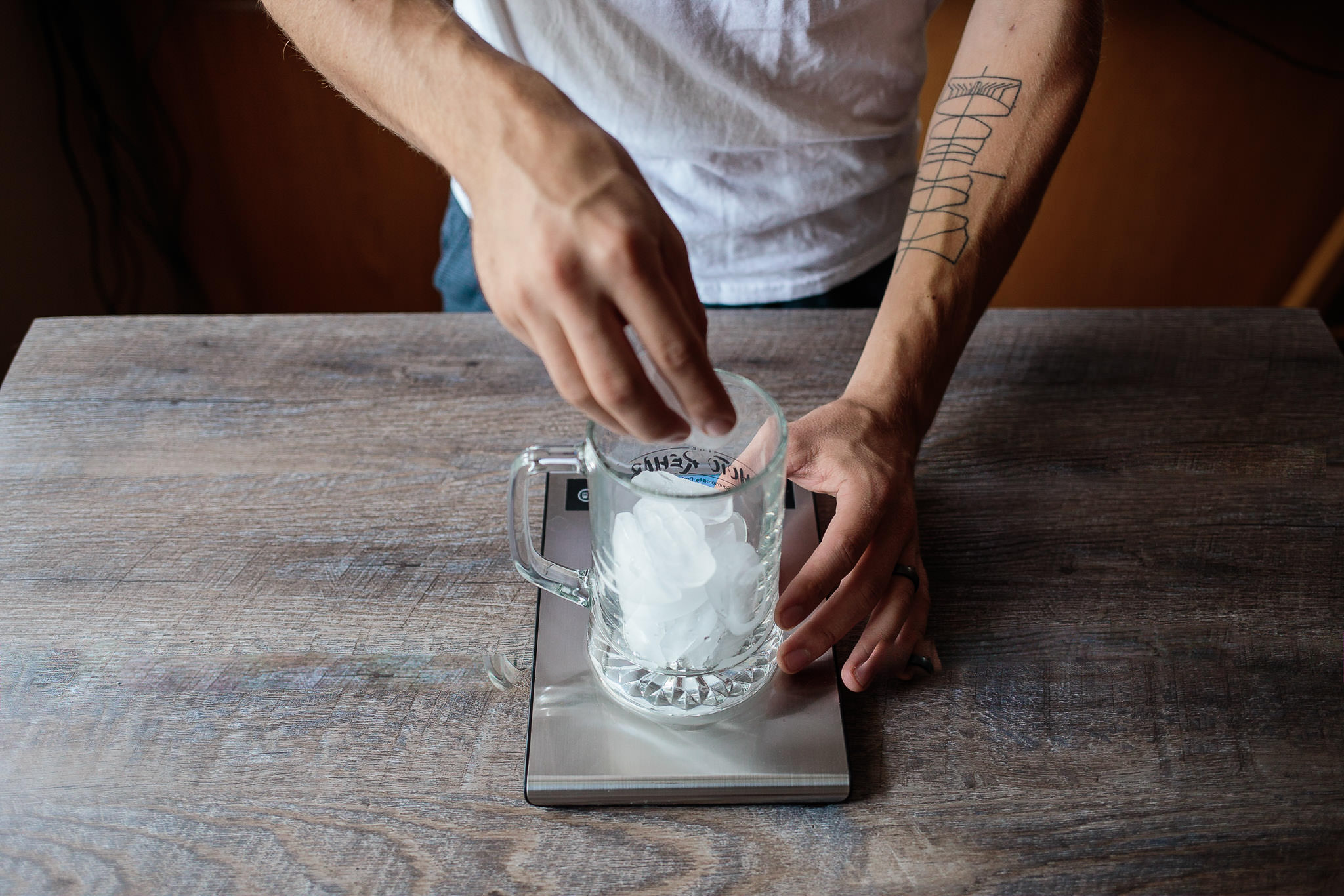
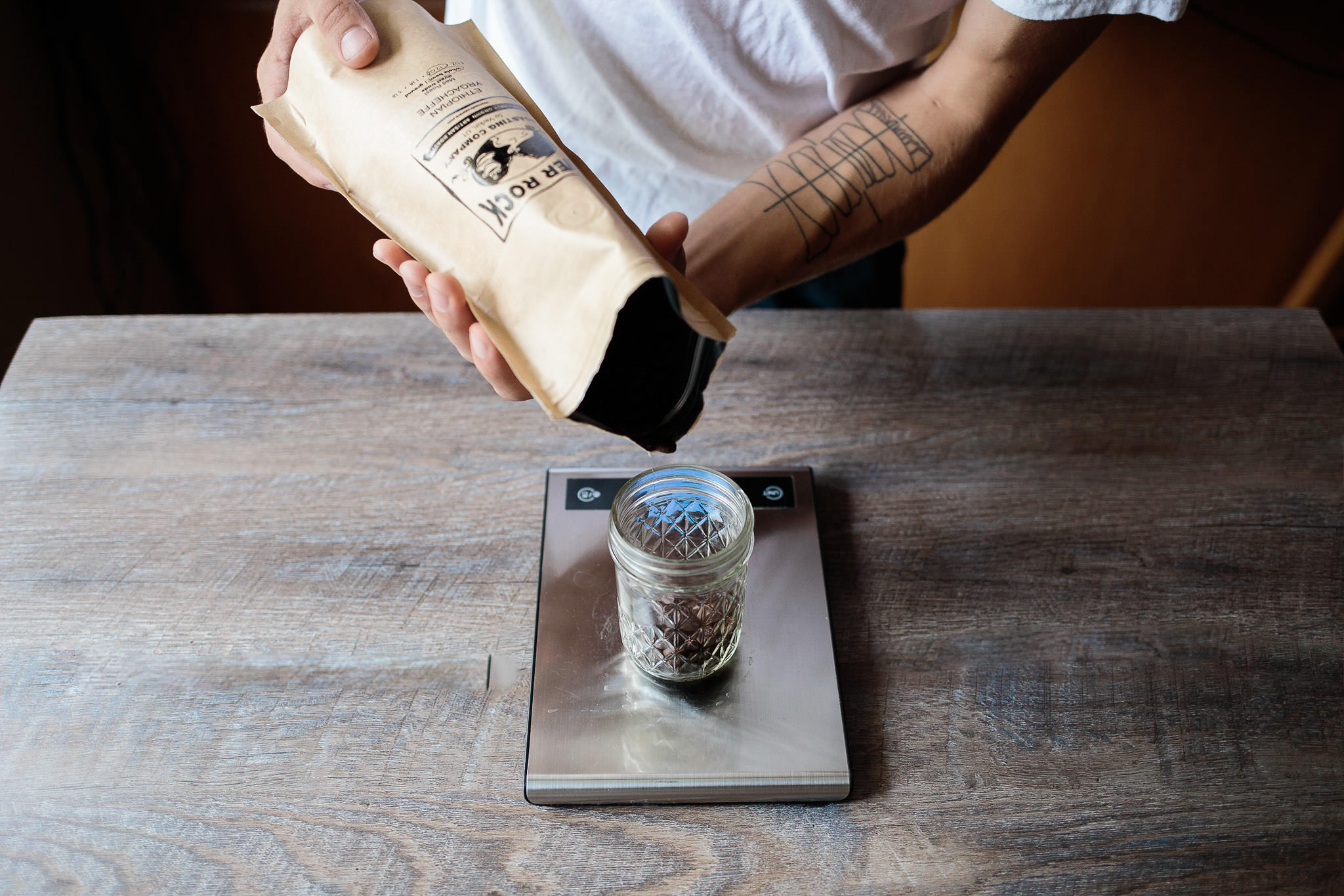

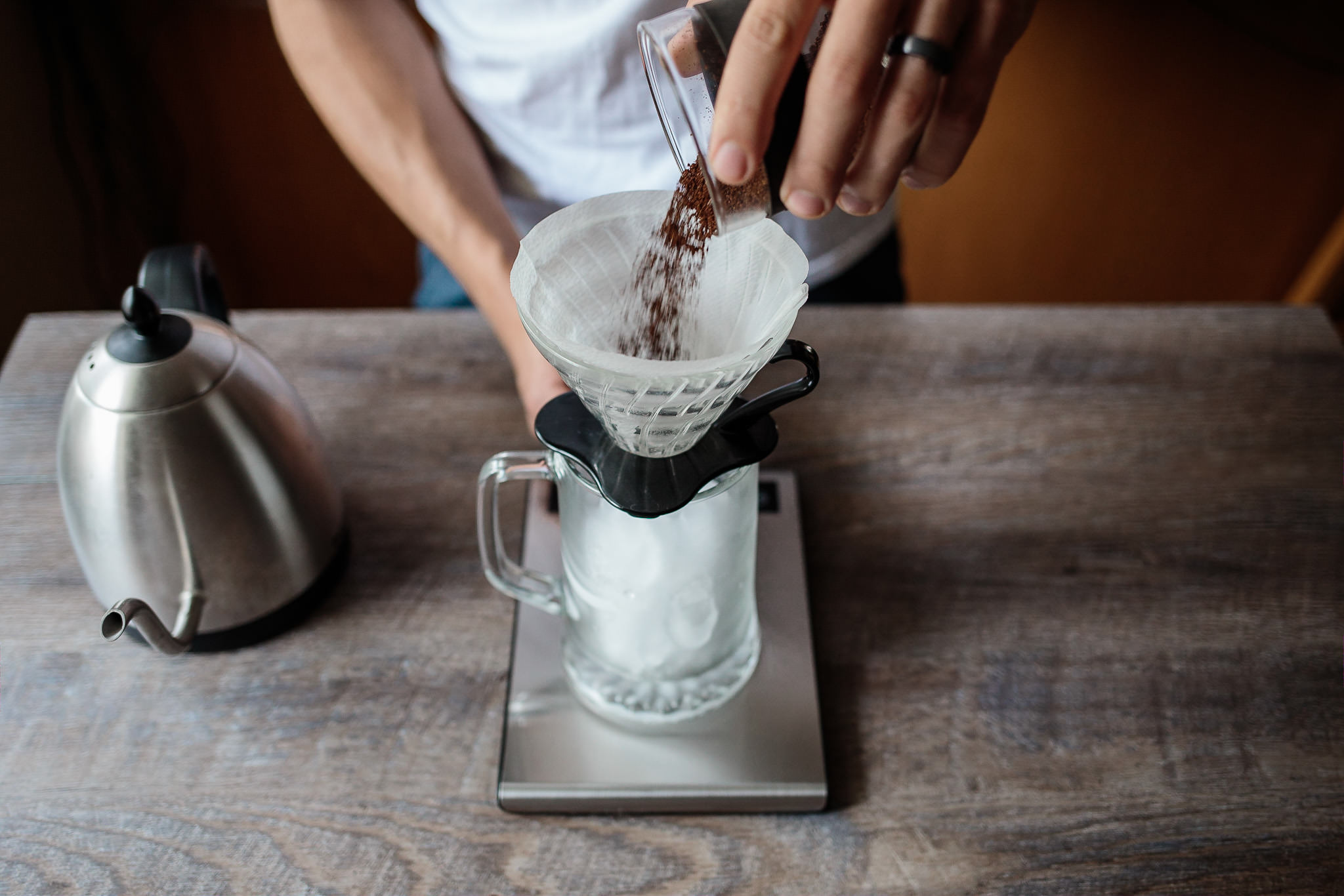


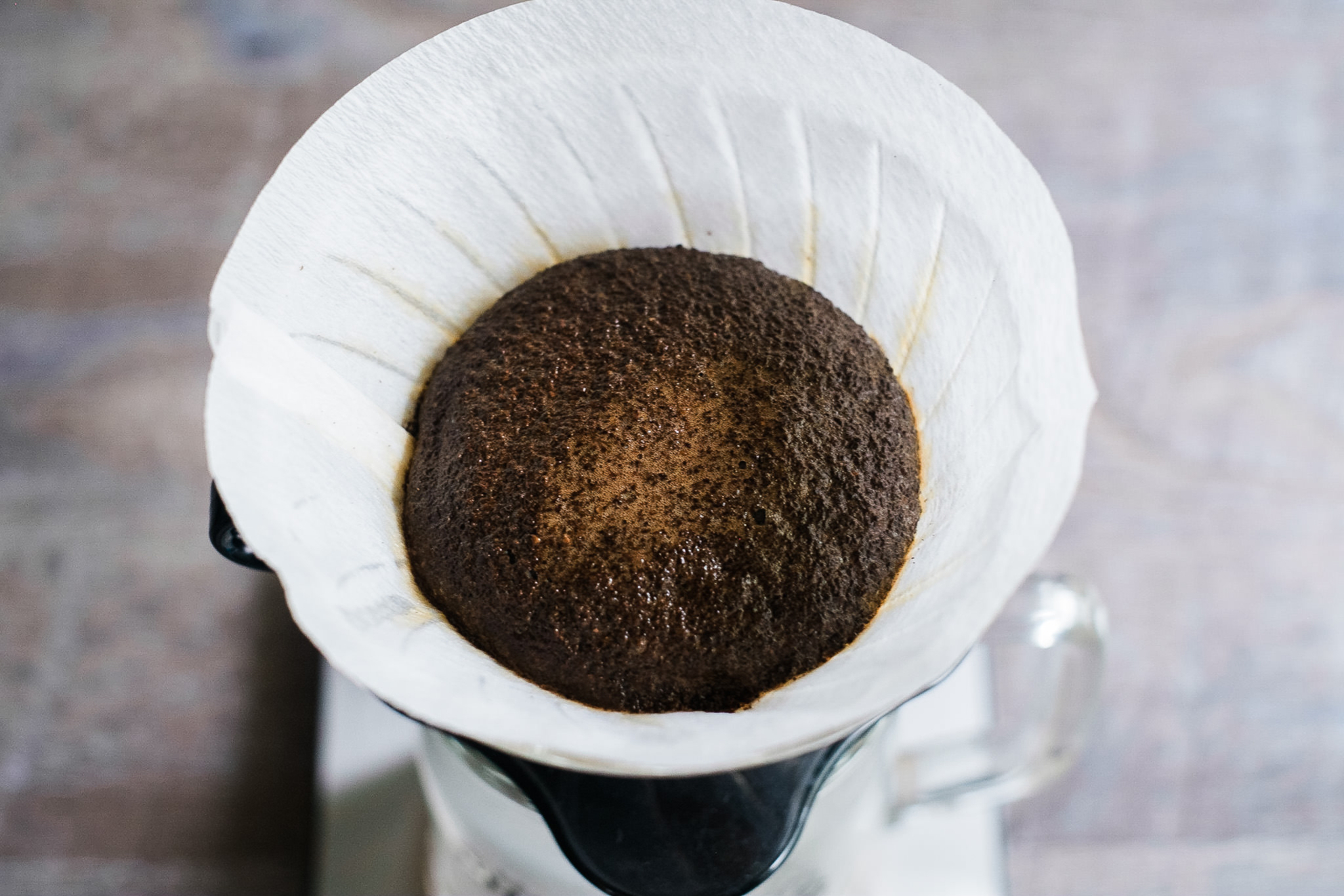

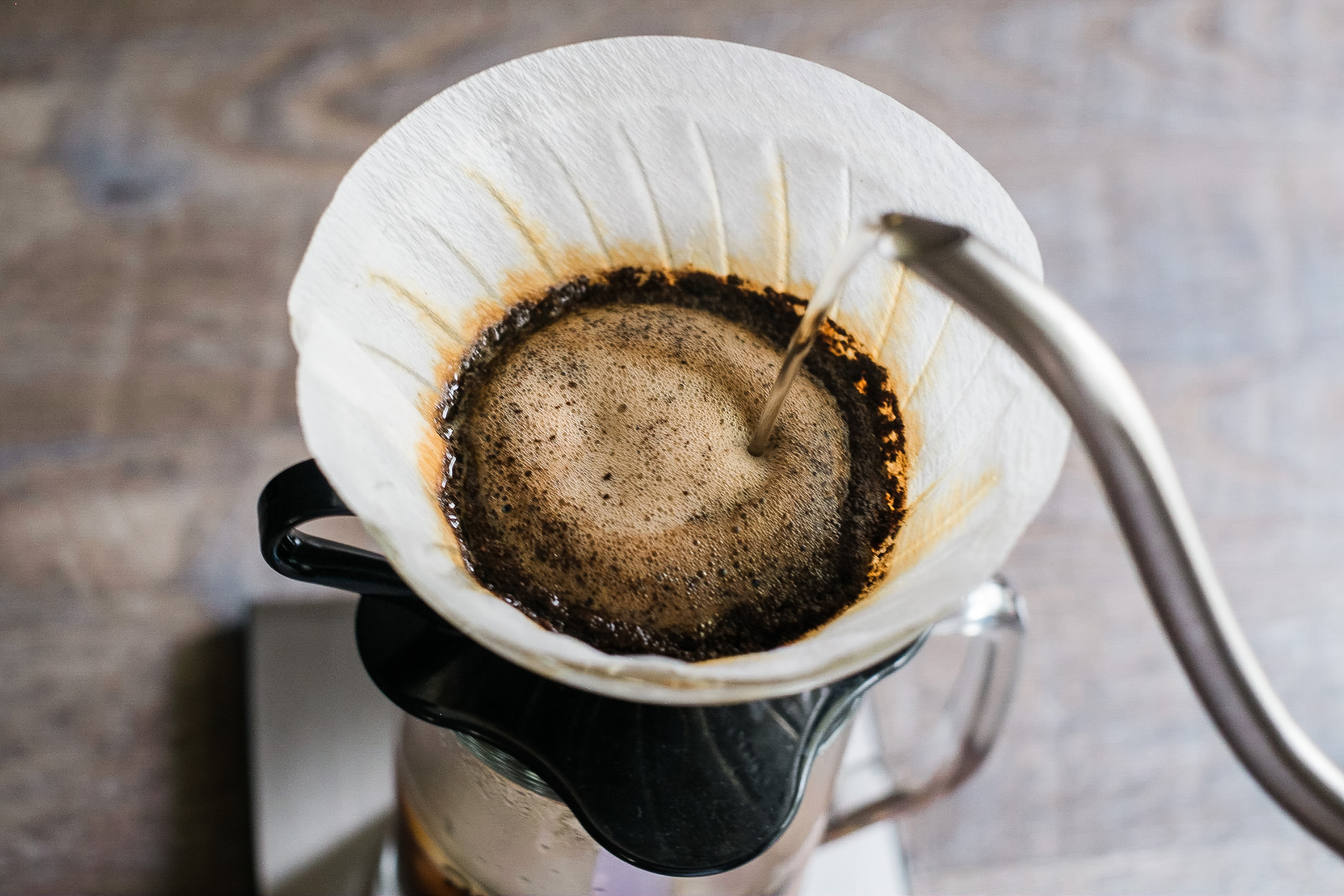
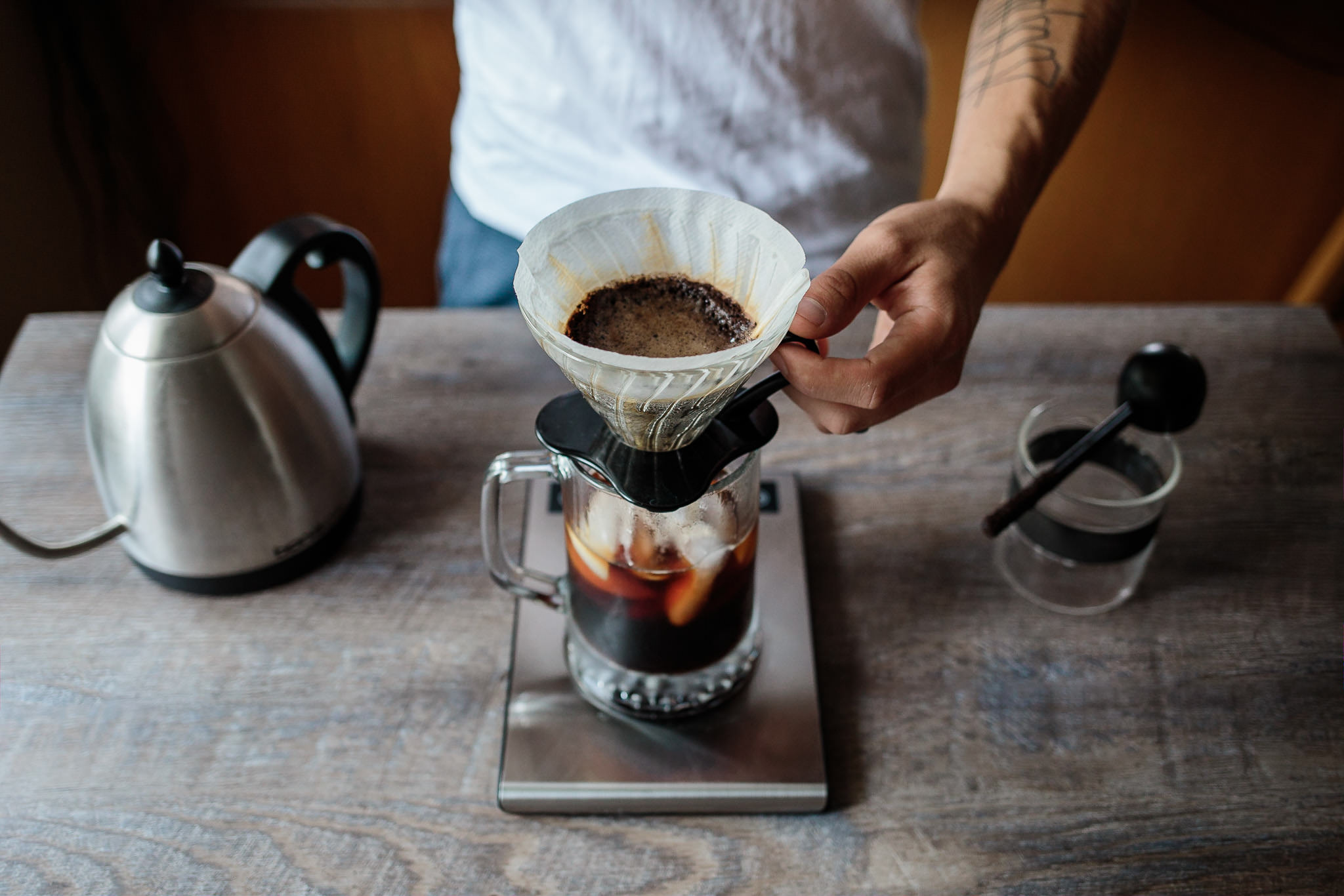
*Personally, I’m not a fan of the Chemed method of iced pour overs. The Chemex requires significantly more rinsing thanks to it’s thicker filters. Since the pour over and carafe are all in one with the Chemex, you cannot pre-heat the filter and pour over for proper extraction and also keep the carafe cool to shock the coffee as it’s brewing. To my taste, the Chemex brews an inferior cup of iced coffee.
Aeropress
Both the upright and the standard Aeropress styles discussed in this post will work for the Japanese iced method. The upright method does not need to be ground finer thanks to it's full immersion. If you choose to grind finer, use a shorter steeping time.
Standard
Example Ratio: (1:16)
Coffee: 16g
Water: 128g
Ice: 128g
Total: 256g
- In a sturdy mug, weigh out the ice
- Get as close as you can to 128g
- Place the mug in the freezer while you prepare the rest
- Heat your water to 175-180 degrees Fahrenheit
- Thanks to pressure, the Aeropress will still extract at these lower temperatures which makes it even easier to cool down
- Screw the filter onto the Aeropress, rinse and pre-heat
- Weigh out and grind your coffee
- Grind on a setting slightly finer than normal
- Remove mug from the freezer and place the Aeropress on it
- Add ground coffee to the Aeropress
- Pour 30-40g of water and start your timer
- Stir to ensure even saturation of grounds
- Allow to bloom for 30 seconds
- Pour the remaining water in 30 seconds
- Affix the plunger to keep coffee from dripping
- At this point you can remove the scale
- After 1 minute begin plunging (2 minutes total)
- Plunging should take 20-30 seconds, stop when you hear a slight hiss
From my experience, the iced method removes much of the variation in flavor between these two methods.
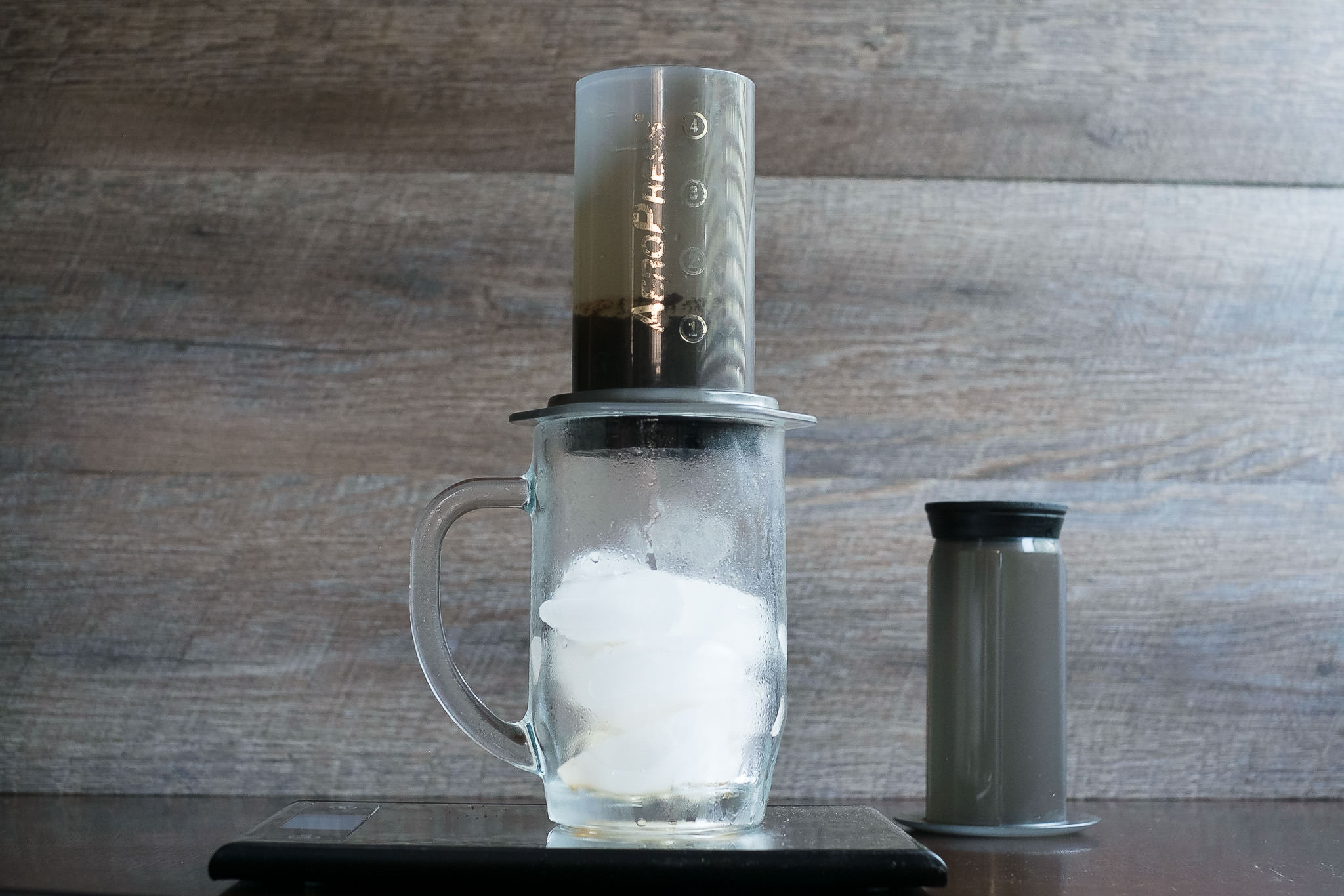
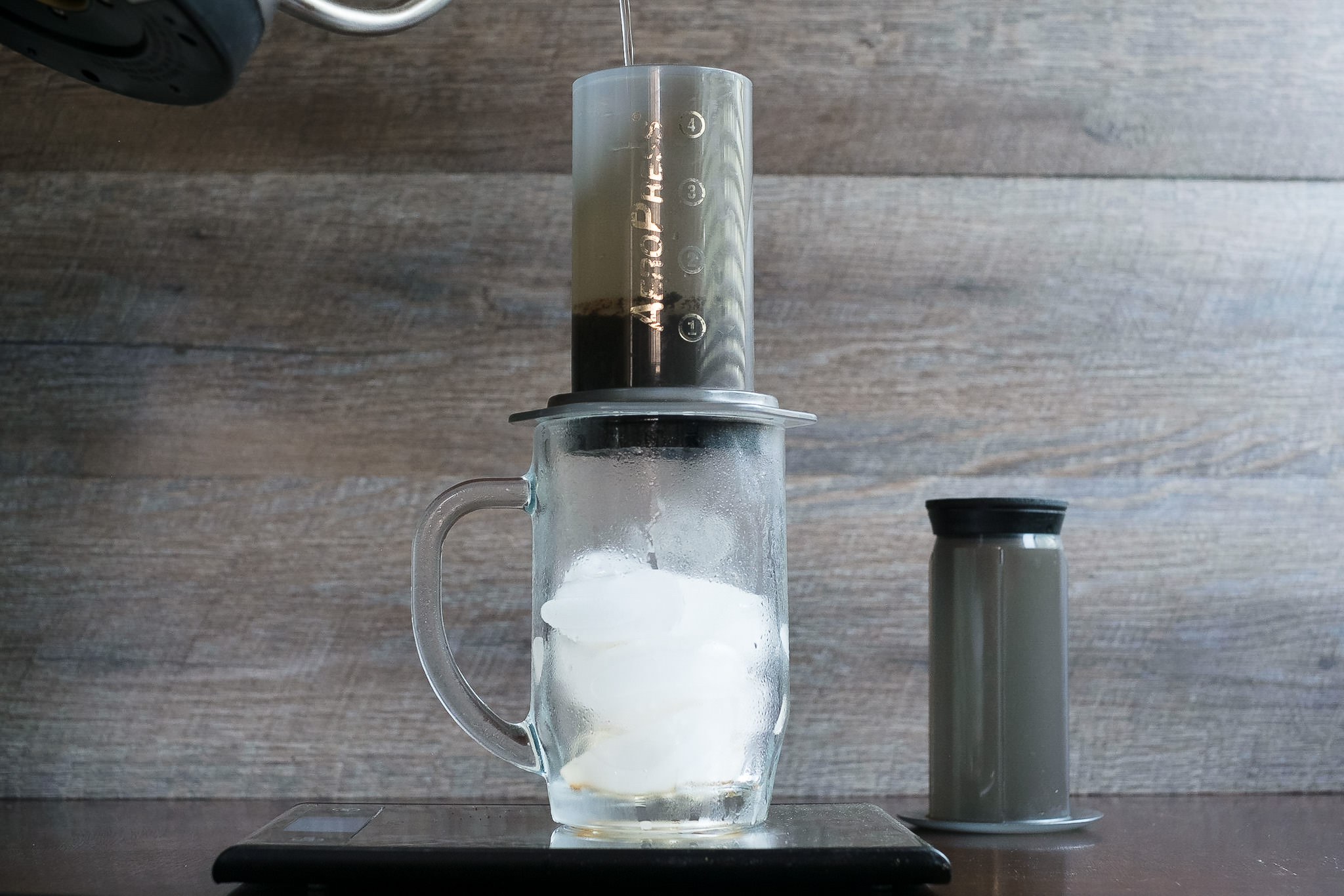
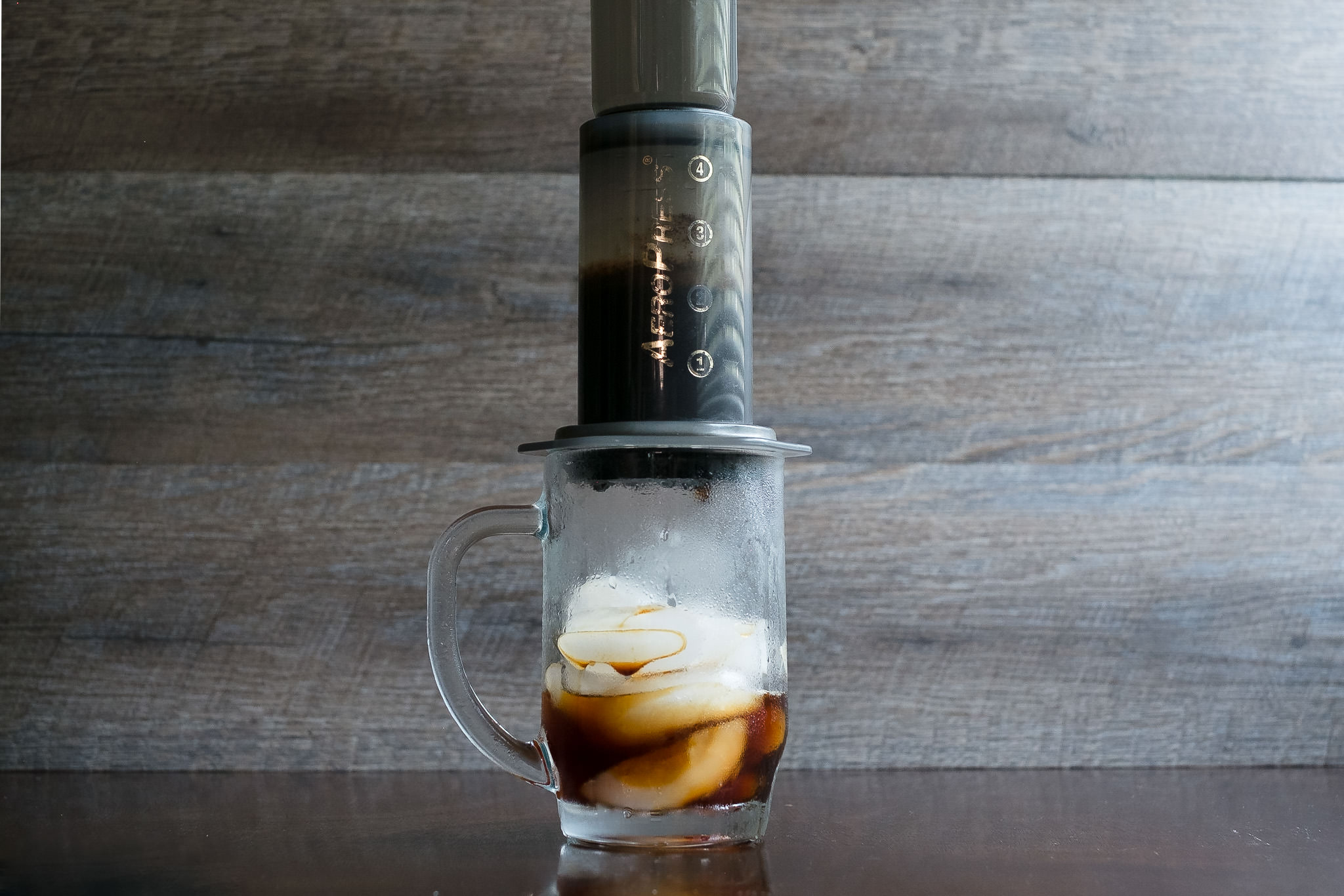
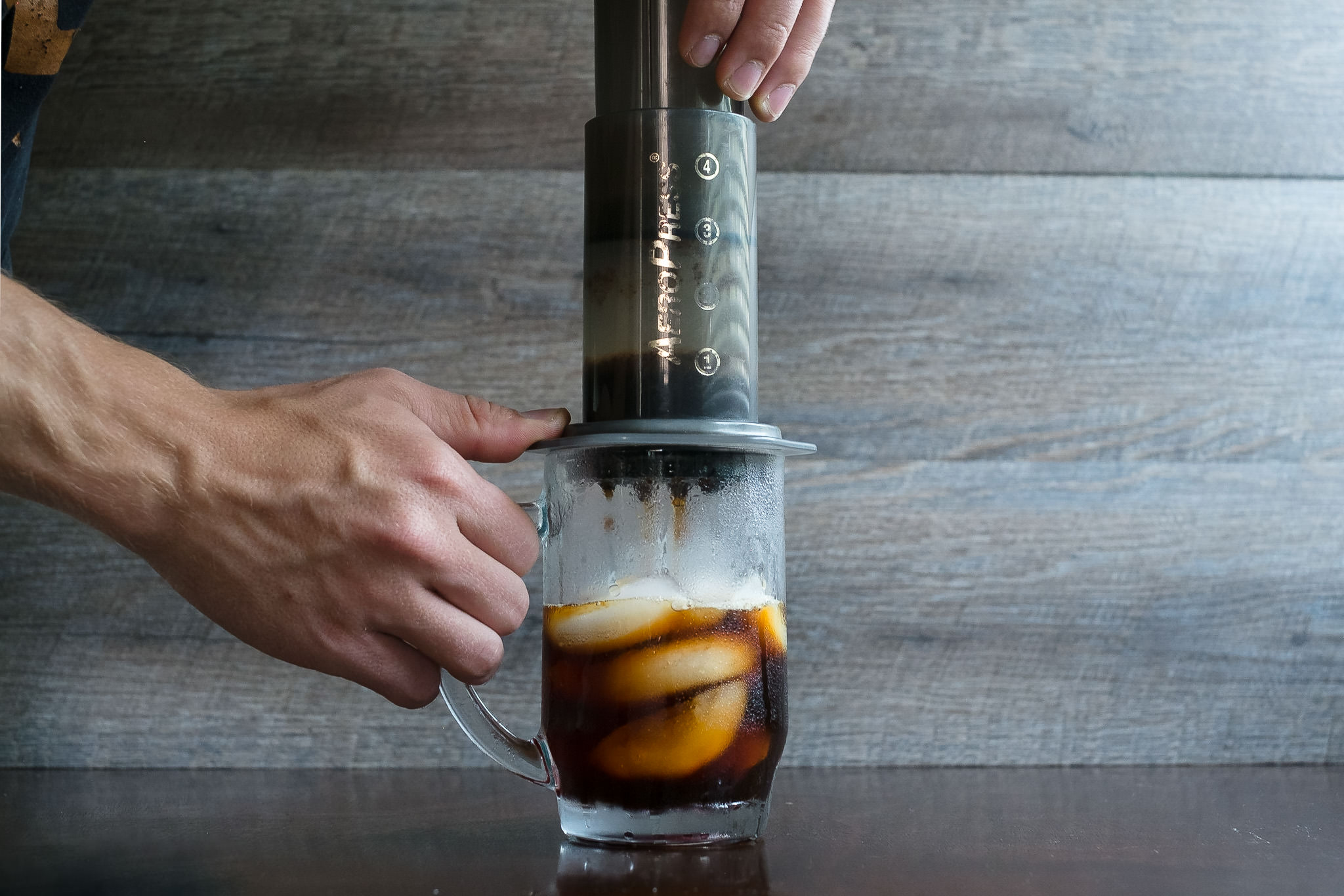
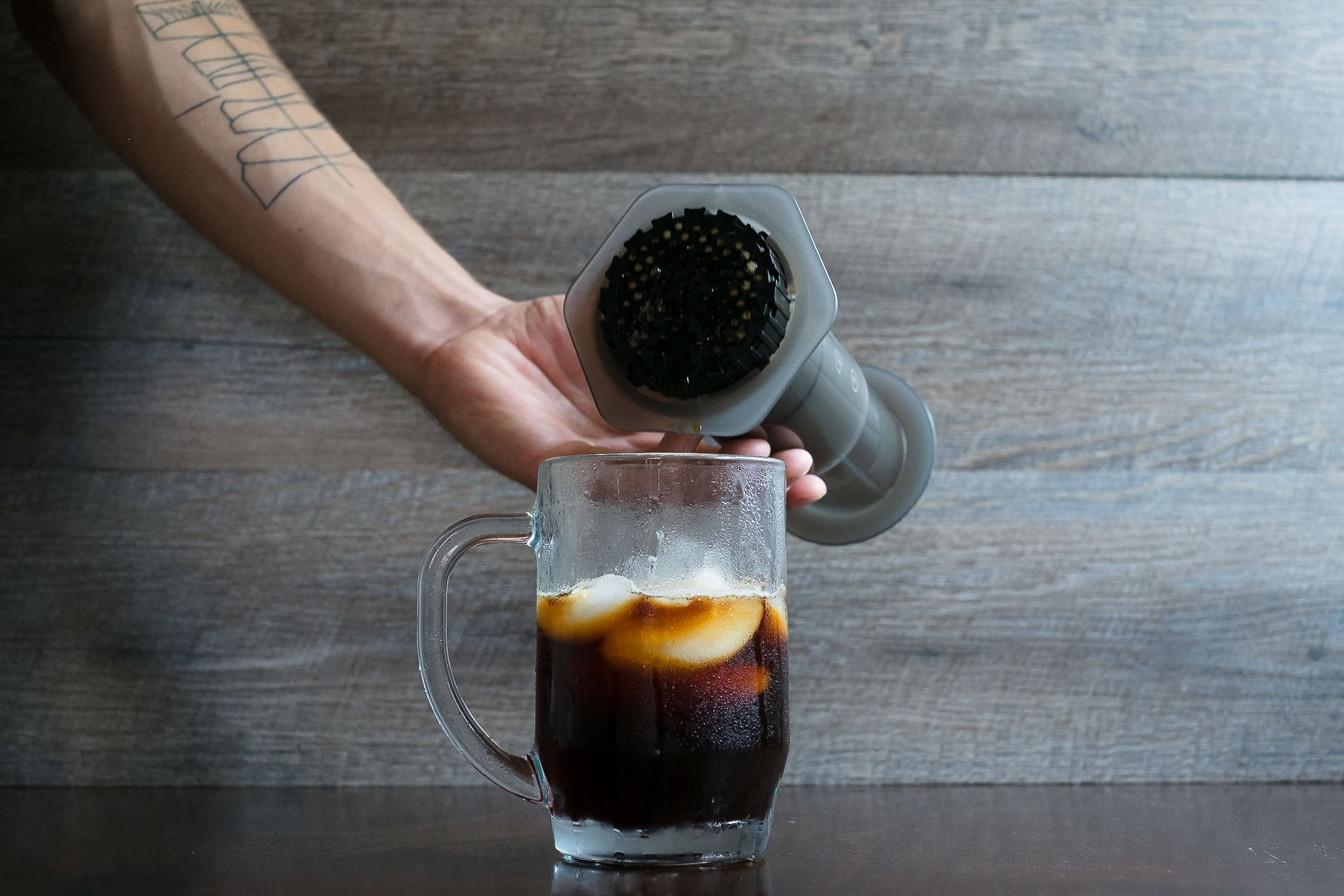
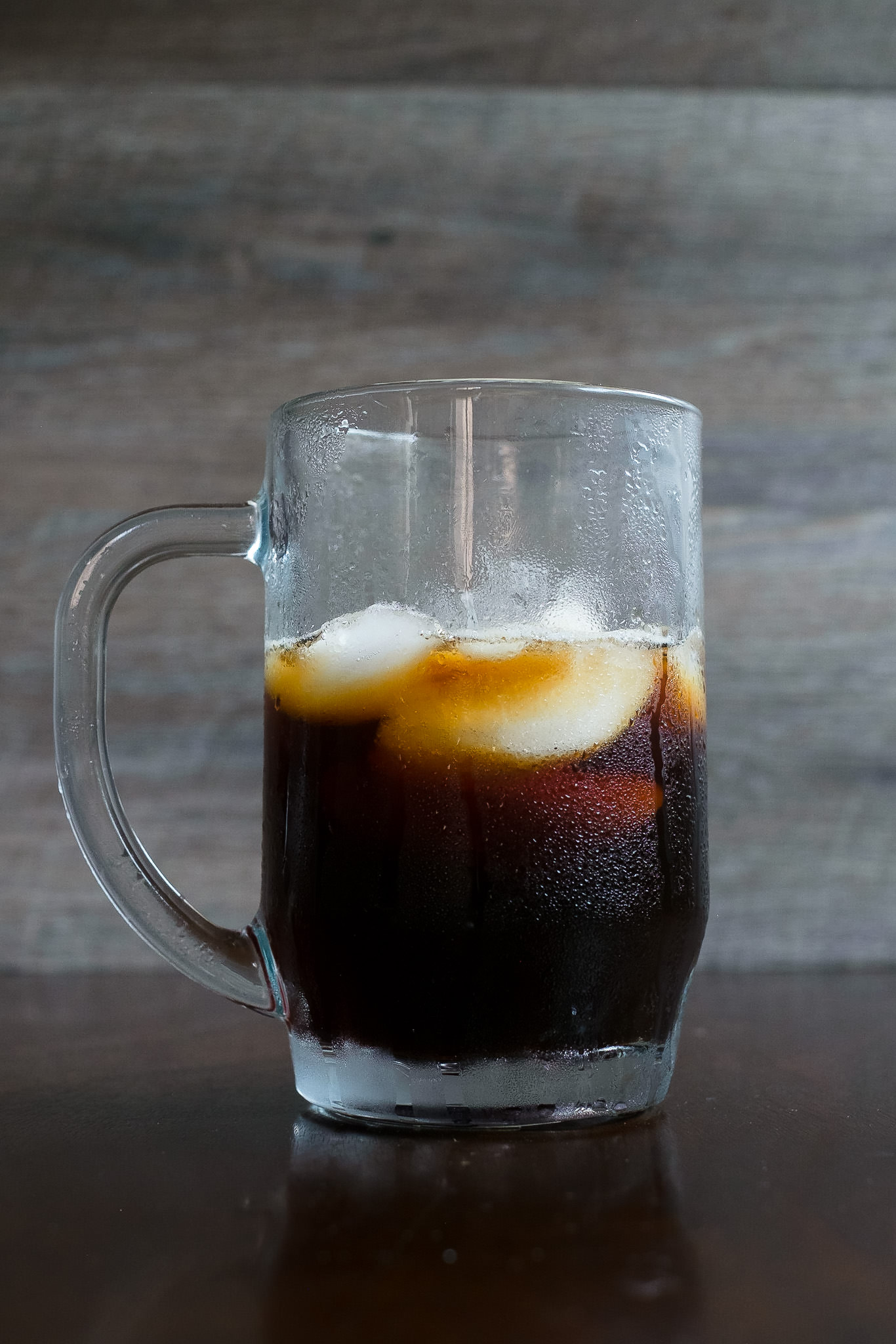
Not Better, Different
As I alluded to in the original cold brew post, some have the opinion that this method is superior to cold brew because of it's complex palate. Personally, I don't think that is the case. The Japanese iced method extracts acidic and aromatic notes like cold brew cannot, however, it doesn't highlight cocoa or nutty notes like cold brew does. Cold coffee always comes with a certain amount of trade offs from it's hot counterpart, neither is superior to the other, just different. They both have their strengths and weaknesses and ought to be appreciated individually.
As always, if you have any comments, questions, or suggestions for future posts, leave a comment below or drop me a line over at the contact page!
Thanks for reading!
Stay handsome

